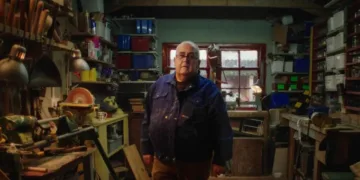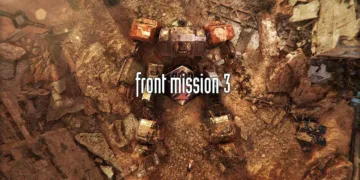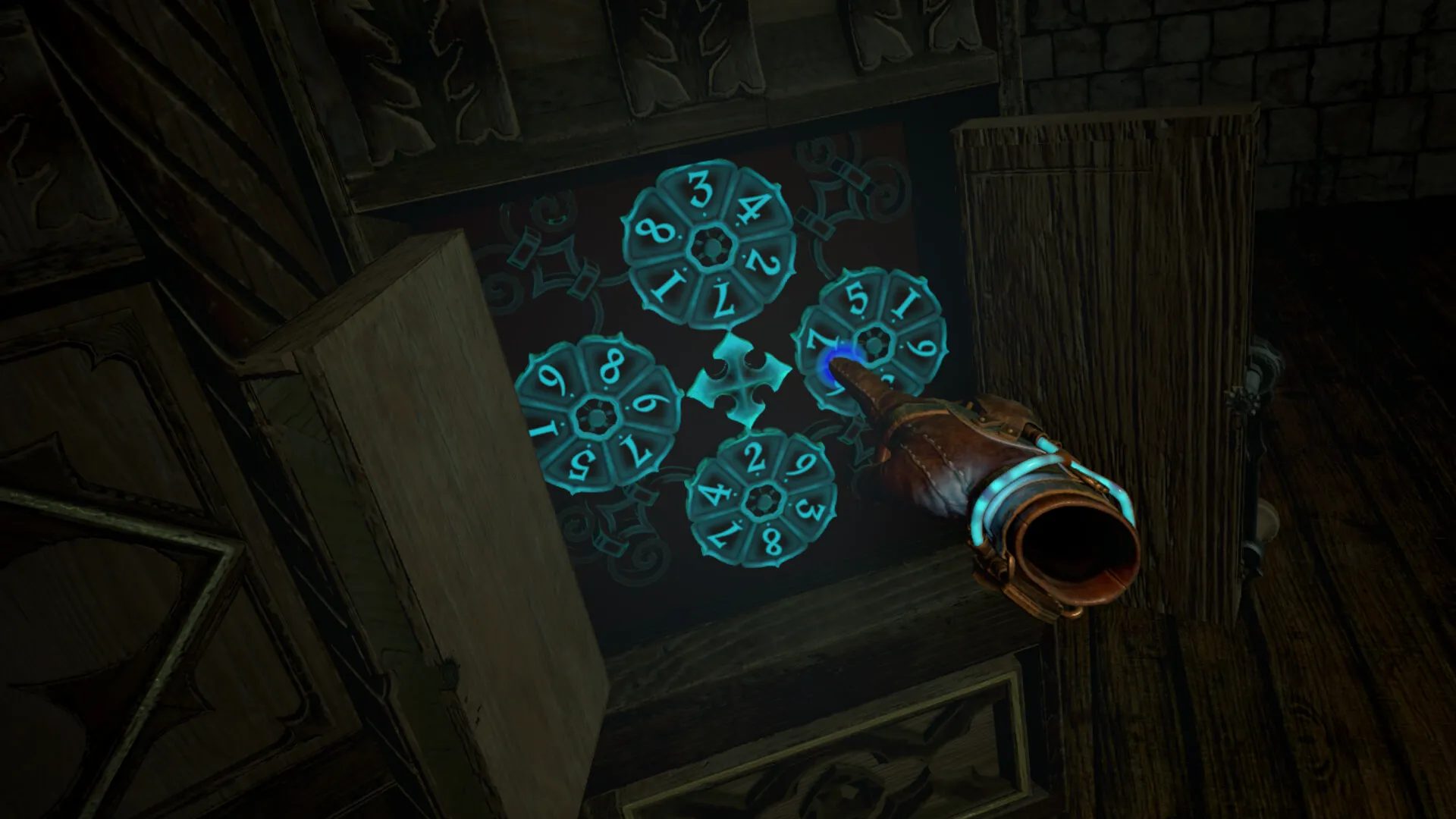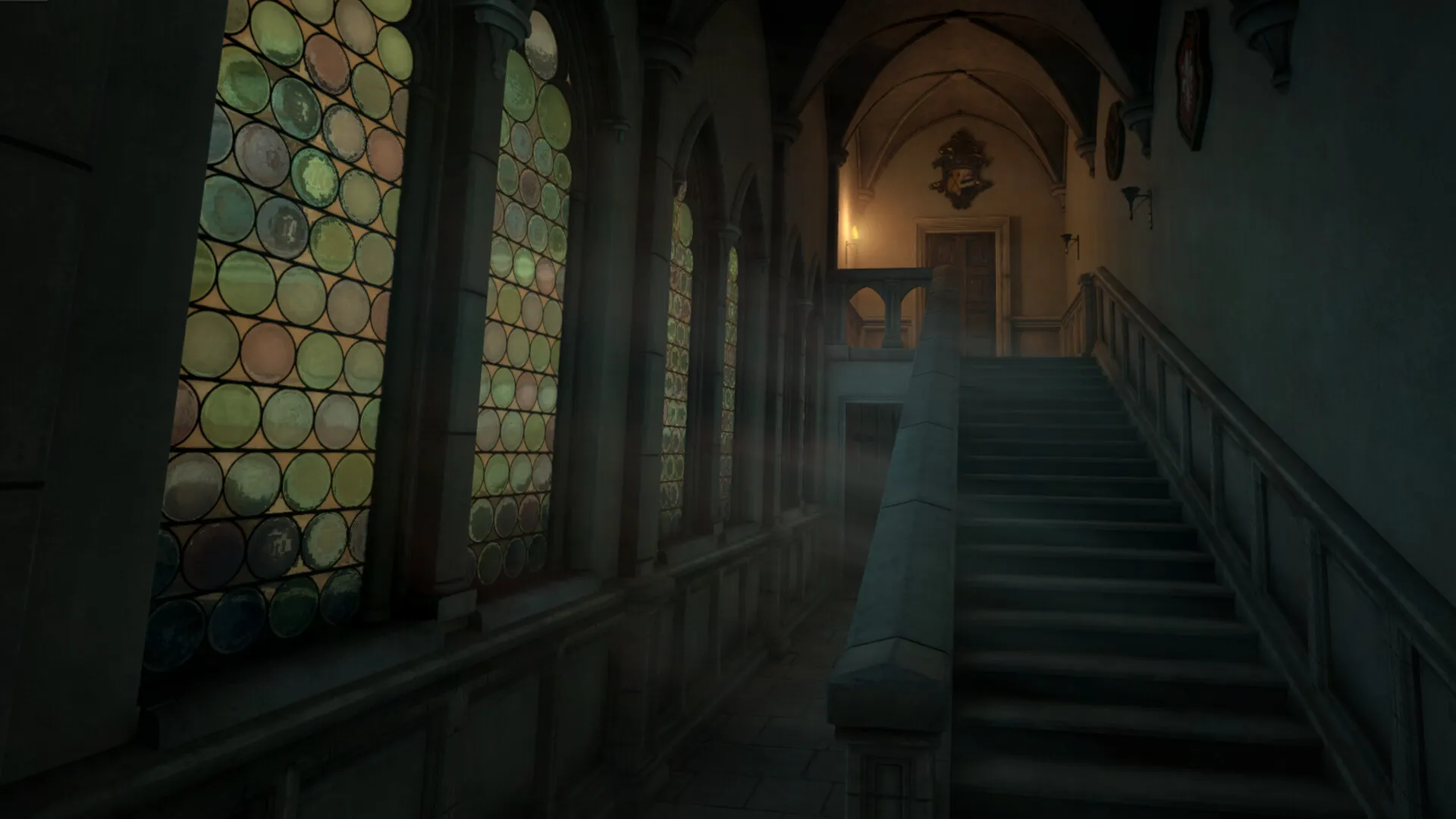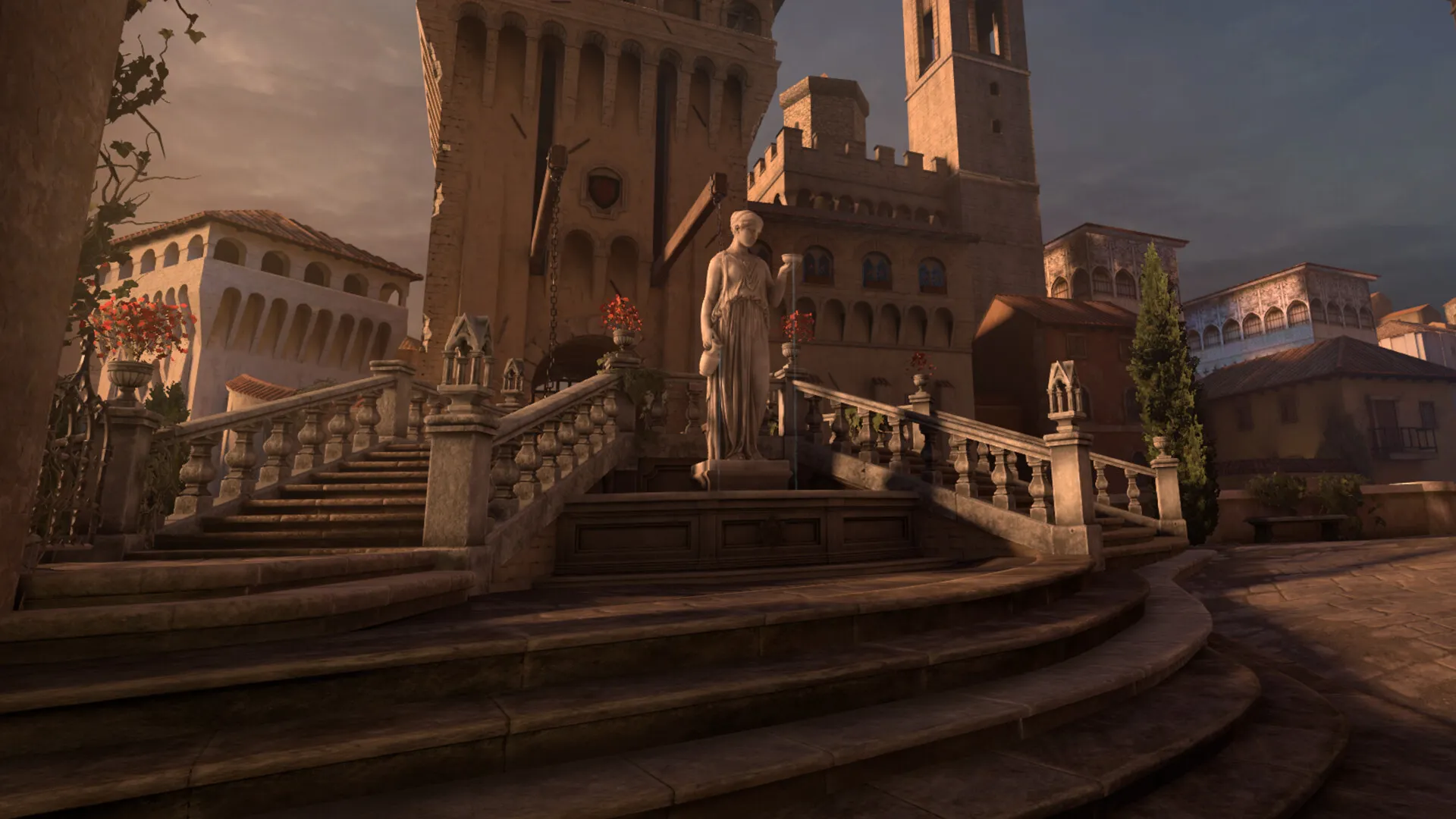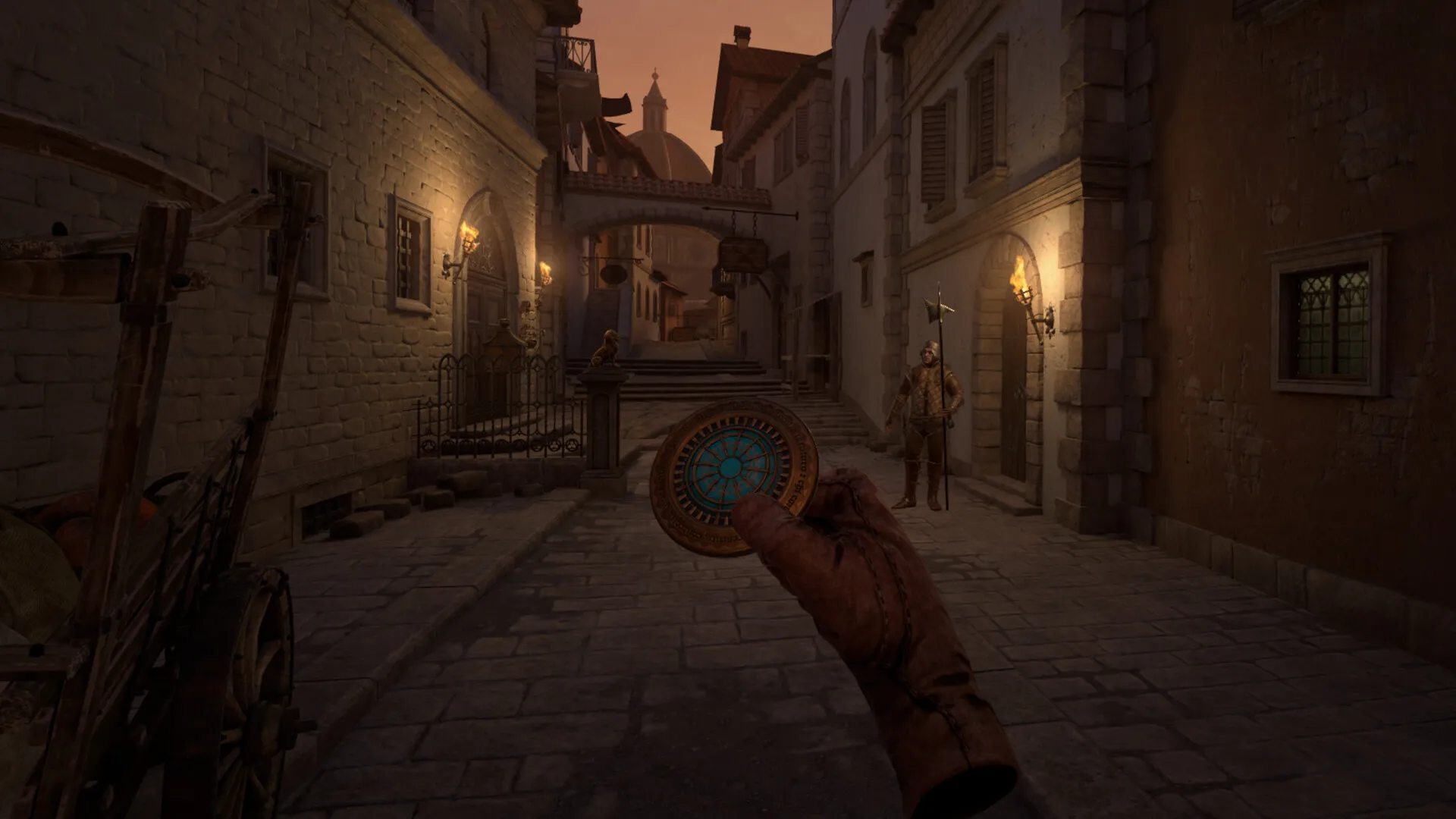In The House of Da Vinci VR, players take on the role of Leonardo da Vinci’s apprentice. They must solve the mystery surrounding their master’s disappearance in a beautifully detailed Renaissance Florence. Blue Brain Games transforms the original flat experience into an exciting virtual reality journey in this game, which also improves player immersion through tactile gameplay.
The main mechanic consists of intricate puzzles, each intended to advance the narrative. Players experience a direct link to the story by adjusting gears and finding hidden secrets. A design choice that rewards curiosity and enhances engagement is the use of special gloves to reveal hidden components, encouraging exploration.
This interaction between mechanics and narrative creates a meaningful experience. Solving each puzzle not only moves the plot forward but also strengthens the player’s connection to da Vinci’s legacy. The puzzle success game captivates players, making each exchange meaningful and rewarding.
Immersive Setting and Atmosphere: The Heart of The House of Da Vinci VR
In The House of Da Vinci VR, players are taken to the busy streets of Florence in 1506, a time when the city was full of the Renaissance’s artistic and scientific energy. This historical background is more than just a backdrop; it’s an important part of the gameplay and narrative. Blue Brain Games invites players to explore the architectural beauty and intellectual impact of a time when art and invention were inextricably linked by immersing them in a carefully designed environment.
The game’s visual quality is amazing, with very detailed textures and lighting that make the scene come to life. Every element is fully realized to evoke a sense of authenticity, from the grand building of the city to the intricate design of da Vinci’s workshop.
Players can appreciate the fine details, such as the worn wood of a workbench and the flickering light of candles, creating a tactile sense of place that enhances immersion. As players interact with different mechanisms and puzzles that reflect da Vinci’s ingenuity, this attention to detail captivates the players and influences the gameplay.
The sound design makes the atmosphere even better, which mixes the noise of city life with the sounds of da Vinci’s inventions. This auditory backdrop and the beautiful visuals create an interesting experience that feels historically accurate and emotionally powerful. In this way, the setting goes beyond just background; it becomes an important part of the story, letting players get lost in a world full of secrets waiting to be found.
Puzzle Design and Gameplay Mechanics: Crafting Challenges in The House of Da Vinci VR
The House of Da Vinci VR strongly emphasizes puzzle design, which is expertly integrated into the narrative and honors Leonardo da Vinci’s ingenuity. Different types of puzzles, like mechanical devices and logic-based problems, are used in the game.
All of them are based on ideas that da Vinci made in real life. As solving these puzzles feels like putting yourself in the shoes of a real inventor, this thematic connection enhances gameplay and deepens players’ engagement with the story.
It was carefully thought out that the puzzles should encourage exploration and critical thinking. In order to complete jobs, players have to move gears, open hidden compartments and put together complicated mechanisms. As each puzzle presents a different challenge that calls for various approaches, this variety ensures players stay engaged.
Some puzzles, for instance, may call for careful observation of the environment, while others may depend on understanding the mechanics of da Vinci’s designs. Multifaceted gameplay keeps things interesting and pushes players to think outside the box, making it appealing to a wide range of gamers, from casual ones to puzzle fans.
The special gloves with their own powers are at the heart of the gameplay. One glove lets players see hidden things, like secret writings and machinery that is out of sight. The other glove adds a time feature that lets players see what happened in the past. By enabling players to find hints about da Vinci’s disappearance, this creative use of the gloves serves as a gameplay mechanic and enhances the narrative. The use of these tools creates a sense of agency and finding, making each puzzle feel closely linked to the main mystery.
The puzzles range in hardness, and the difficulty level is right, so players don’t get frustrated. Players can advance without giving up the satisfaction of problem-solving by using a hint system, which gently prods them when they encounter difficulties.
This design choice is similar to methods found in other independent games, where making the game easy to play is important for keeping people engaged without making it too easy. Ultimately, The House of Da Vinci VR’s puzzle design successfully combines mechanics and narrative, luring players into a world of creativity and exploration where each puzzle they solve gets them closer to discovering the Renaissance’s secrets.
Visual and Audio Presentation: Crafting an Immersive Experience in The House of Da Vinci VR
The visual and audio presentation in The House of Da Vinci VR plays a significant role in luring players into the magical world of Renaissance Florence. The pictures are very good, and the environments come to life with carefully designed textures.
Every part of the city, from the worn stone of the buildings to the small details of da Vinci’s workplace, feels real. The lighting is especially impressive; moving shadows and warm candlelight add to the atmosphere, creating a sense of depth and realism that pulls players deeper into the narrative.
This attention to detail supports the gameplay mechanics and helps create a visually stunning experience. The graphics are so good that each mechanism feels real and interesting, and players can interact with many different things. Thanks to the aesthetic choices that evoke a sense of historical accuracy, players can fully appreciate the brilliance of da Vinci’s ideas as they move through the beautifully rendered environments.
A strong sound design, which greatly enhances the overall atmosphere, accompanies the visuals. Sound input from interactions, like the satisfying clicks of gears and the soft whirring of mechanisms, adds a level of immersion that puzzle games don’t always consider.
Ambient sounds, such as the faraway chatter of Florence’s streets and the soft flicker of candles, create a living, responsive world. This combination of audio and visual elements helps to create an emotional connection to the story, making every moment feel important as players try to solve the mysteries of Da Vinci’s legacy. The experience is elevated by high-quality graphics and engrossing sound design, making it more than just a collection of puzzles but a journey through history.
Interaction Mechanics and Movement: Navigating the World of The House of Da Vinci VR
The House of Da Vinci VR’s interaction mechanics and environment system are crucial to the overall experience, determining how players interact with the beautifully designed puzzles and settings. The game’s movement is based on teleportation, a design choice that makes the game more accessible in VR but has some big problems.
Players can quickly jump between set places, which makes getting around easier and lessens the effects of motion sickness. The organic exploration of Florence’s beautiful landscapes is constrained by this method, which can detract from the immersive experience. When movement is restricted to particular nodes, the feeling of being physically present in such a vibrant world is somewhat lessened, making it difficult to fully enjoy the intricacies of the environment.
When players try to interact with the many puzzles that are spread throughout the game, the limitations of the teleportation system become more obvious. The interaction mechanics can be annoying, even though the design pushes players to think critically and interact with da Vinci’s inventions. Precision becomes a problem because the game heavily relies on VR controllers to move around items.
Players often have trouble with the controls’ responsiveness, especially when trying to do delicate things like moving levers or aligning gears. The virtual hand mechanics—where the index finger only extends when close to an interactive object—can feel distant and vague. This can be annoying when players accidentally start actions or miss interactions altogether.
These interaction problems are similar to those seen in other VR games where movement accuracy affects gameplay. In contrast to games with more flexible controls or free movement, The House of Da Vinci VR’s mechanics sometimes feel like they get in the way.
The frustration of poorly planned interactions can overshadow the satisfaction of fully solving the puzzles. This lack of consistency begs the question of balancing making the game accessible to casual players and providing a highly customized experience for players who are more accustomed to the intricacies of VR gameplay. The interaction mechanics ultimately serve the narrative but highlight a tension between immersion and functionality that can influence player involvement.
Narrative Elements: Weaving Story and Exploration in The House of Da Vinci VR
In The House of Da Vinci VR, the narrative framework serves as an interesting hook and a rich tapestry that players can discover as they journey.
The story, which combines historical intrigue with personal stakes, is set against the backdrop of a mysterious disappearance and invites players to assume the role of Da Vinci’s apprentice. Players are encouraged to solve puzzles for fun and learn more about da Vinci’s secrets and the nuances of his relationships, thanks to how the story is set up effectively.
For the narrative to develop, environmental storytelling is crucial. Players come across artifacts and hints that deepen their understanding of the plot and the characters as they move through the meticulously crafted environments. As you solve each puzzle, you find a mechanical challenge and pieces of history, like letters, sketches, and secret rooms, that give you a glimpse into da Vinci’s mind and emotional struggles.
This method is similar to how the story is told in independent games like What Remains of Edith Finch, where exploration reveals character-driven tales. In The House of Da Vinci VR, the intertwining of story and gameplay mechanics creates a cohesive experience, making each puzzle solved feel important in the bigger picture of the narrative. This synergy enhances investment for players to engage with the narrative on a deeper, more emotional level.
Conclusion: A Journey Through Ingenuity and Mystery
The House of Da Vinci VR is an immersive experience that beautifully combines fun puzzles with a deep narrative, all set against the beautiful Renaissance backdrop of Florence.
The game excels in its complex puzzle design, which tests players’ minds and enhances their emotional link to da Vinci’s world. The sound design and visual fidelity make the experience even better by creating a believable and captivating atmosphere that pulls players into the period.
However, the interaction mechanics and movement schemes are very hard to work with. Players may experience frustration during crucial puzzle-solving times due to the reliance on teleportation for navigation, which can detract from a smooth experience.
Despite these flaws, the game’s storytelling and puzzle integration strengths make it an interesting journey for casual and serious gamers, asking players to figure out the mysteries of one of history’s greatest minds.
The Review
The House of Da Vinci VR
The House of Da Vinci VR masterfully combines immersive puzzles with a rich narrative, creating a captivating experience that brings the Renaissance to life. The teleportation and interaction mechanics can detract from the overall experience, even though its stunning visuals and sound design increase player involvement. Regardless, the game does a good job of inviting players to discover more about the mysteries surrounding da Vinci, making it a fun journey for casual and serious gamers.
PROS
- Intricate and engaging puzzle design
- Stunning visuals and immersive environments
- Rich narrative intertwined with gameplay
- Strong audio design enhances atmosphere
- Encourages exploration and critical thinking
CONS
- Teleportation movement can limit exploration
- Interaction mechanics may lack precision
- Some puzzles may frustrate due to control responsiveness























